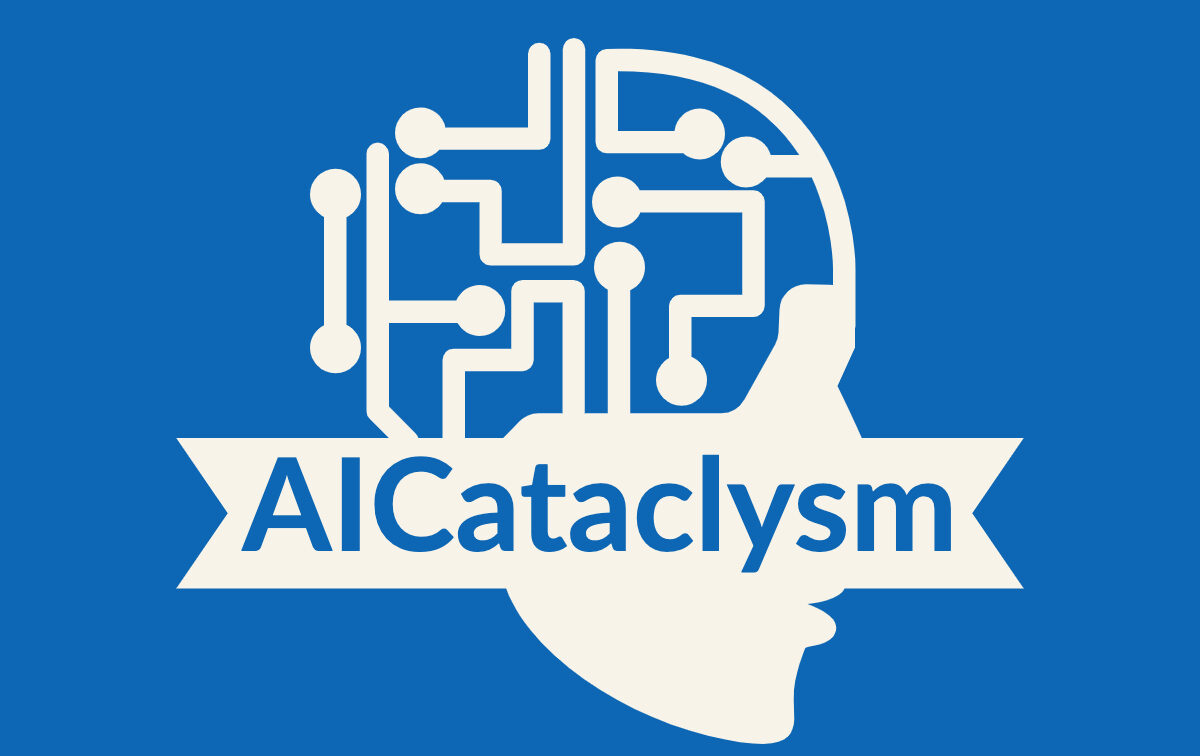Greetings! I’m here to take you on an exciting journey into the fascinating realm of Artificial General Intelligence (AGI) theory. Buckle up as we unravel the mysteries surrounding this advanced AI concept and explore its implications for the future of technology and society.
AGI theory delves into the development of AI systems that possess human-like cognitive abilities, capable of tackling any intellectual task with ease. Unlike narrow AI, which focuses on specific tasks, AGI encompasses elements of human understanding, learning, adapting, and creativity.
While AGI remains a concept rather than a reality, scientists and researchers continue to debate its potential and the timeframe for its development. As we dive deeper into this topic, we’ll explore the intricacies of AGI and its distinctions from other AI theories, along with the implications it holds for various fields.
Key Takeaways:
- AGI refers to AI systems with human-like cognitive abilities, capable of solving a wide range of intellectual tasks.
- AGI is different from narrow AI, which is designed for specific tasks, as it incorporates human understanding, learning, adapting, and creativity.
- The progression from AI to AGI has been fueled by advancements in machine learning, natural language processing, and computer vision.
- AGI has the potential to revolutionize healthcare, education, finance, and other fields through personalized treatment plans, adaptive learning experiences, and predictive analytics.
- There is an ongoing debate among scientists regarding the timeline and feasibility of AGI development, considering challenges such as understanding human cognition and ensuring ethical use of AGI technologies.
What is AGI?
AGI, short for Artificial General Intelligence, refers to AI systems that have the ability to perform tasks that require human-level intelligence in a wide range of domains. Unlike Artificial Narrow Intelligence (ANI), which is designed for specific tasks, AGI systems can learn, reason, problem-solve, and adapt to new situations autonomously, without the need for human intervention. It possesses cognitive flexibility and the potential for creativity, making it the closest approximation of true AI. AGI is often compared to ANI to highlight their differences and explore the scope and implications of AGI in various fields.
To better understand AGI, it is important to recognize its capabilities. AGI systems can perform tasks that humans can do, such as understanding and processing natural language, recognizing patterns, and making decisions based on complex data. These systems have the potential to learn from experience and improve their performance over time. AGI is not limited to a particular domain or application, unlike ANI which is specialized and focused on specific tasks. AGI possesses the versatility and adaptability to tackle a wide range of challenges, making it a potentially game-changing technology.
It is important to distinguish AGI from AI, as the two terms are often used interchangeably. AI refers to a broad range of automated tasks performed by computer software, while AGI specifically focuses on the development of AI systems that possess human-like cognitive abilities and can perform tasks across various domains. While AI systems excel in specific narrow tasks, AGI systems have the potential to learn, reason, and adapt to new situations without human intervention. AGI represents the next step in AI evolution, pushing the boundaries of what AI systems can achieve and paving the way for more advanced and autonomous technologies.
The Progression from AI to AGI
As we delve into the realm of artificial intelligence (AI), it is important to understand the progression from AI to Artificial General Intelligence (AGI). AI, in its current state, involves computer software that performs automated tasks. However, AGI represents a more comprehensive and advanced form of AI that aims to replicate human intelligence and cognitive abilities.
The evolution from AI to AGI has been driven by significant advancements in key areas such as machine learning, natural language processing, and computer vision. These breakthroughs have paved the way for the exploration and potential development of AGI, pushing the boundaries of what AI systems can achieve.
While AI focuses on specific narrow tasks, AGI aims to possess the level of autonomy, adaptability, and problem-solving capabilities that are closer to human-level intelligence. AGI systems can learn, reason, and adapt to new situations autonomously, without the need for human intervention. This transition from AI to AGI represents a significant leap forward in the quest for true artificial intelligence.
| AI | AGI |
|---|---|
| Performs specific narrow tasks | Applies intelligence to any problem |
| Requires human intervention | Autonomously learns and adapts |
| Task-focused | Human-like cognitive abilities |
As we continue to progress in the field of AI and explore the development of AGI, we are witnessing a new era in technology that has the potential to transform various industries and the way we approach complex problems. The journey from AI to AGI is an exciting one, filled with possibilities and new frontiers to be explored.
Implications of AGI in Various Fields
Artificial General Intelligence (AGI) has the potential to revolutionize multiple industries, including healthcare, education, and finance. In healthcare, AGI can play a crucial role in improving patient care and outcomes. It can assist in diagnosing illnesses, analyzing medical data, and providing personalized treatment plans based on an individual’s unique genetic makeup and medical history. AGI’s ability to process and understand vast amounts of medical information can help healthcare professionals make more accurate diagnoses and develop targeted and effective treatment strategies.
Education is another field that can benefit greatly from AGI. AGI can enhance personalized learning experiences by adapting teaching methods and materials to meet the individual needs and learning styles of students. It can provide customized feedback and support, helping students grasp complex concepts more effectively. AGI can also facilitate the creation of interactive and immersive learning environments, making education more engaging and accessible.
Table: Potential Applications of AGI in Healthcare and Education
| Field | Potential Applications |
|---|---|
| Healthcare | Diagnosis of illnesses, personalized treatment plans, medical data analysis |
| Education | Personalized learning experiences, adaptive teaching methods, interactive learning environments |
In the finance industry, AGI can be utilized for predictive analytics, risk management, and fraud detection. By analyzing vast amounts of financial data and market trends, AGI can assist in making more accurate predictions and informed decisions. AGI’s ability to process and understand complex financial information can also help in identifying and preventing fraudulent activities, safeguarding the integrity of financial systems.
The implications of AGI in various fields are vast and can lead to transformative changes. However, it is important to consider the ethical implications and potential challenges associated with the development and deployment of AGI. Ensuring responsible research and development and addressing societal concerns will be key in harnessing the full potential of AGI for the betterment of humanity.
The Debate on AGI Development and Timeline
When it comes to the development of Artificial General Intelligence (AGI), there is a heated debate among scientists and researchers. The central question revolves around the timeline for achieving AGI and the feasibility of its development. Some experts argue that AGI could be achieved in the near future, given the rapid advancements in AI technologies. They believe that breakthroughs in areas such as machine learning and natural language processing are paving the way for AGI to become a reality sooner than expected.
However, others are more skeptical and consider AGI to be a distant goal that requires significant advancements in various fields. They argue that replicating complex cognitive processes and understanding human cognition are significant challenges that need to be overcome. Additionally, ensuring the responsible and ethical use of AGI technologies is another crucial aspect that needs to be addressed.
The debate surrounding AGI development has far-reaching implications. It shapes the direction and focus of research in the field, influencing the allocation of resources and the development of frameworks and guidelines for AGI development. As the debate continues, scientists and researchers are working tirelessly to address the challenges and push the boundaries of what AI systems can achieve.
| Challenges in AGI Development | Timeline for AGI |
|---|---|
| Understanding human cognition | Near future |
| Replicating complex cognitive processes | Distant goal |
| Ethical use of AGI technologies | Varies among experts |
AGI vs AI: Understanding the Differences
When discussing artificial intelligence (AI), it is essential to understand the distinction between AI and artificial general intelligence (AGI). While both are branches of AI, AGI represents a higher level of autonomy, adaptability, and problem-solving capabilities compared to traditional AI systems.
AI, also known as narrow AI, focuses on performing specific tasks and excels in those areas. For example, AI systems can analyze data, recognize patterns, and make predictions, but they lack the ability to apply their intelligence to a wide range of domains. AGI, on the other hand, aims to replicate human-level intelligence across various tasks and possesses cognitive flexibility and the potential for creativity.
One of the key differences between AGI and AI lies in their level of autonomy. While AI systems require human intervention and guidance to perform tasks, AGI systems have the ability to learn, reason, and adapt to new situations independently. AGI goes beyond pre-programmed algorithms, enabling machines to think and problem-solve like humans.
It is important to understand the limitations of AI when considering its potential applications. AI systems are designed for specific tasks and lack the ability to generalize knowledge across different domains. They are also limited in their understanding of context and lack human-like adaptability. AGI aims to overcome these limitations by simulating human cognition and achieving a level of intelligence that replicates human capabilities.
In summary, while AI focuses on narrow, task-specific capabilities, AGI aims to replicate human-level intelligence in a wide range of domains. AGI systems possess greater autonomy, adaptability, and problem-solving capabilities compared to traditional AI systems. Understanding the differences between AGI and AI is crucial in exploring the potential of AGI and its implications in various fields.
OpenAI: Advancing AGI through ChatGPT
OpenAI, a pioneering AI research organization, plays a significant role in advancing Artificial General Intelligence (AGI). One of their notable contributions is ChatGPT, a language model that has generated intrigue and speculation about the potential development of AGI within the organization. While ChatGPT itself is not AGI, it represents a crucial stepping stone towards the creation of AGI systems.
ChatGPT showcases OpenAI’s dedication to pushing the boundaries of AI capabilities. By utilizing massive amounts of data, advanced machine learning algorithms, and natural language processing techniques, ChatGPT exhibits impressive language generation and understanding abilities. It can engage in human-like conversations, answer questions, and provide relevant information.
“The possibilities offered by ChatGPT are groundbreaking. It demonstrates the potential for AI systems to not only understand natural language but also engage in meaningful dialogue, adapting to different contexts,” says OpenAI researcher.
OpenAI’s development of GPT-4, the successor to ChatGPT, has stirred further excitement in the AI community. While details about GPT-4 are scarce due to OpenAI’s secretive approach, speculations about its AGI capabilities have sparked curiosity and anticipation. The continuous progress in AI research and development by organizations like OpenAI paves the way for advancements that may bring us closer to the realization of AGI.
| OpenAI’s Contribution to AGI Advancements | |
|---|---|
| Key Contribution | Advancements in AGI Research |
| Notable Achievement | Development of ChatGPT |
| Significance | Stepping stone towards AGI development |
| Upcoming Advancement | Development of GPT-4 |

OpenAI’s Role in Shaping AGI Progress
OpenAI’s contributions not only drive AGI advancements but also shape the conversation around its development. By sharing insights, research findings, and technical details, OpenAI fosters collaborative engagement and interdisciplinary innovation. Their commitment to responsible AI deployment and ethical considerations ensures that the development of AGI aligns with societal values and benefits humanity.
As OpenAI continues to explore the frontiers of AGI, the future holds exciting possibilities. Advancements in AI research, coupled with the integration of human intelligence and AI systems, can lead to transformative breakthroughs. OpenAI’s efforts, along with those of other AI organizations and researchers, contribute to the ongoing quest for AGI, challenging the boundaries of what AI can achieve.
The Future of AGI and AI
As we look ahead to the future of Artificial General Intelligence (AGI) and AI, it is clear that we are on the brink of groundbreaking advancements. The potential for AGI to become a reality raises exciting possibilities and challenges in equal measure. One aspect that holds great promise is the concept of human augmentation, where AGI technologies enhance and augment human capabilities and intelligence. This fusion of human and artificial intelligence could lead to unprecedented levels of problem-solving, creativity, and productivity.
Another area of immense interest is the exploration of Artificial Super Intelligence (ASI). ASI refers to AI systems that surpass human intelligence and possess capabilities far beyond our comprehension. While ASI remains a topic of speculation and debate, its potential impact on society and the world is undeniable. From solving complex global challenges to revolutionizing industries and scientific research, ASI has the potential to reshape our understanding of what is possible with AI.
As we navigate the path to AGI and explore the future of AI, it is crucial to consider the ethical implications and ensure responsible development and use of these technologies. Questions regarding privacy, security, and biases in AI algorithms must be addressed to ensure that AGI and AI systems are used for the benefit of humanity as a whole. Additionally, collaboration and interdisciplinary research will play a vital role in forging the future of AGI and AI, as different fields of expertise converge to unlock the full potential of these technologies.
| AGI | Human Augmentation | Artificial Super Intelligence (ASI) |
|---|---|---|
| AGI technologies possess human-like cognitive abilities and have the potential to revolutionize various fields. | Human augmentation explores the fusion of human and artificial intelligence, leading to enhanced capabilities and problem-solving. | ASI refers to AI systems that surpass human intelligence and have the ability to tackle complex global challenges. |
| AGI has implications in healthcare, education, finance, and more. | Human augmentation could lead to unprecedented levels of creativity, productivity, and problem-solving. | ASI has the potential to reshape industries, scientific research, and our understanding of AI’s capabilities. |
| AGI development requires ongoing research, interdisciplinary collaboration, and advancements in various fields. | Human augmentation raises ethical considerations and the need for responsible development and use of AI technologies. | ASI remains a topic of speculation and debate, with its potential impact yet to be fully understood. |
AI in 2024 and Beyond
As we look ahead to 2024 and beyond, the field of artificial intelligence (AI) is poised to continue its rapid advancements. With ongoing research and development, AI is expected to make significant strides in various industries, transforming the way we live and work.
In the healthcare sector, AI is predicted to further revolutionize personalized healthcare. Through advanced algorithms and machine learning, AI systems can analyze vast amounts of medical data to assist in accurate diagnoses, personalized treatment plans, and drug discovery. This will lead to more efficient and effective healthcare delivery, ultimately improving patient outcomes.
Advancements in AI technologies are also expected to drive increased automation in industries such as manufacturing, logistics, and transportation. AI-powered robots and autonomous vehicles will streamline processes, reduce costs, and enhance productivity. The integration of AI into these sectors will create new opportunities for innovation and growth.
In addition, AI applications will become more integrated into our daily lives, with virtual assistants and smart devices becoming increasingly intelligent and intuitive. These advancements will enable personalized experiences, making our interactions with technology more seamless and efficient.
| Industry | Predictions for AI in 2024 and Beyond |
|---|---|
| Healthcare | – Personalized treatment plans based on individual genetic profiles – AI-assisted diagnostics for faster and more accurate medical assessments – Drug discovery and development through AI algorithms and simulations |
| Manufacturing | – Increased automation and efficiency through AI-powered robots – Predictive maintenance to minimize downtime and optimize production – Advanced quality control systems for improved product standards |
| Consumer Electronics | – Smarter virtual assistants with enhanced natural language processing capabilities – AI-powered smart devices that adapt to users’ preferences and habits – Seamless integration of AI in everyday products for personalized experiences |
While these predictions paint an exciting future for AI, it is important to address potential challenges and risks. Ethical considerations surrounding AI, such as privacy, bias, and job displacement, need to be carefully navigated to ensure responsible and equitable use of AI technologies.
Overall, as AI continues to advance, its impact will be felt across industries and in our daily lives. By embracing the potential of AI and addressing its challenges, we can shape a future where AI technologies enhance human capabilities, drive innovation, and create a more inclusive society.
Conclusion: The Path to AGI and the Future of AI
As I conclude this exploration of AGI and the future of AI, it is clear that we are on an exciting path filled with immense possibilities. The journey towards AGI will require ongoing research, interdisciplinary collaboration, and advancements in fields like machine learning, cognitive psychology, and neuroscience.
Looking ahead, the future of AI holds tremendous potential for transformative advancements in various industries and aspects of our lives. From personalized healthcare and enhanced automation to improved AI applications in daily life, the possibilities are vast.
However, it is crucial to consider the ethical implications and societal impact of AGI and AI. Responsible development and use of AI technologies are paramount to ensure a future that benefits humanity. Additionally, the concept of human augmentation and the potential for Artificial Super Intelligence (ASI) raise fascinating questions about the boundaries of AI development and its impact on society.
As I navigate this exciting realm of AGI and AI, I am filled with a sense of optimism and curiosity. The path to AGI may still be a concept rather than a reality, but the possibilities that lie ahead are undeniably exciting. Let us continue to explore, research, and innovate as we shape the future of AI in a responsible and ethical manner.






